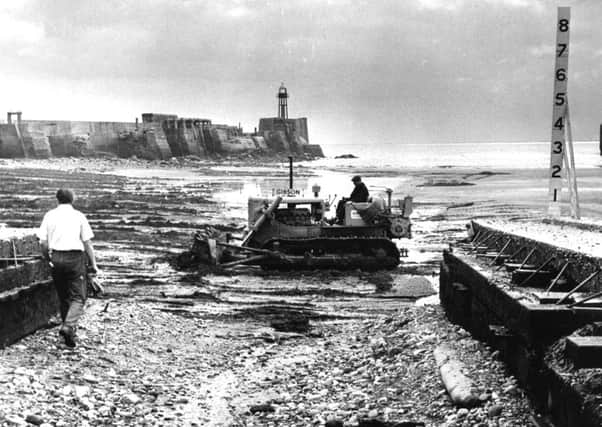On the Waterfront: The days of launching ships on the Wear


For many years, launching ways were coated with tallow – rendered animal fat – to overcome friction.
Melted tallow would be applied to the slipway and allowed to harden, before being coated with soft soap. During the days of sail, whale oil would often by used.
Advertisement
Hide AdAdvertisement
Hide AdDespite lack of enthusiasm by UK shipbuilders to change from traditional methods, Bartram and Son seized the opportunity to showcase the use of petroleum lubricant to grease the ways for the launch of their 6,354 gross ton cargo ship Kieldrecht on July 19, 1950.
The launch attracted widespread attention in shipbuilding circles, with petroleum lubricant having been perfected by the Anglo-American Oil Company after research dating back 16 years.
An Anglo-American official said: “Launches can be speeded by 80 per cent by this new method and we are convinced that its undoubted advantages will lead to its widespread adoption.”
It was claimed that the main advantages of using petroleum lubricant were that it could be used in temperatures as low as 10 degrees Fahrenheit (-23 degrees Celsius) without freezing and could be reused afterwards.
Advertisement
Hide AdAdvertisement
Hide AdWhile the method had already been used with considerable success in Sweden, the United States and on the Continent, the Bartrams launch was the first occasion on which petroleum lubricant had been used in connection with a major British ship launch.
The vessel was named by Mrs Phis van Ommeren, wife of a director of the owners, Phs van Ommeren’s NV – a well-known Rotterdam shipping company and was the first ship built in Sunderland to direct Dutch order for some 20 years. Also of note was that head foreman shipwright Cyril Lax was taking part in his 50th launch for Bartrams.
Representatives from every Wear shipyard were present, with experts from Anglo-American Oil being on hand to answer their queries.
In contrast, minutes earlier, the largest ship built on the Wear up to that time – the 15,083 gross ton motor tanker Heogh Arrow – entered the river from Sir James Laing and Sons’ Deptford yard amid clouds of smoke from burning tallow.
Advertisement
Hide AdAdvertisement
Hide AdKieldrecht was later towed to Wallsend, where her North Eastern Marine – Doxford engine was installed.
On October 17, 1950, while completing fitting-out in Hudson Dock, the ship was fortunate to escape with minor damage when oil on the surface of the water burst into flames and ignited floating timber.
Renamed Spalmatori Engineer in 1970, she was wrecked near Mombasa, Kenya in 1974 and scrapped at Gadani Beach, Pakistan in 1977.